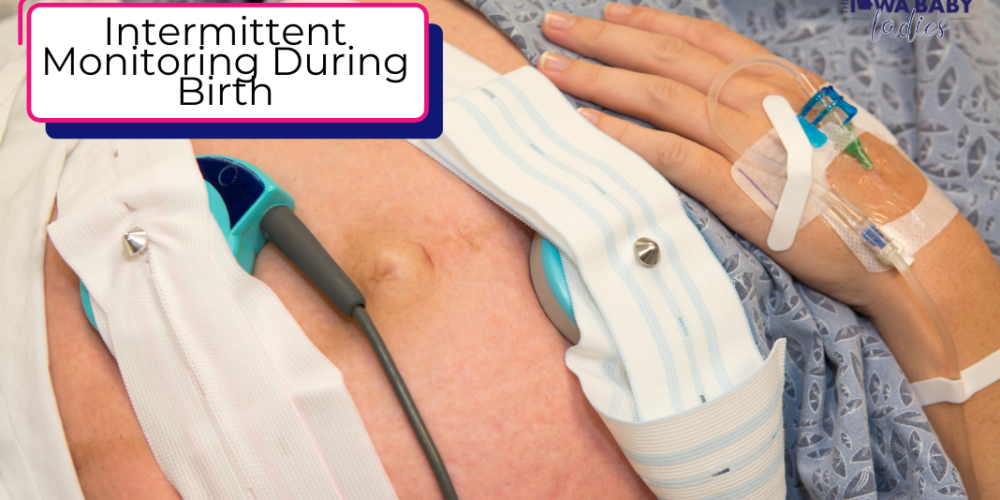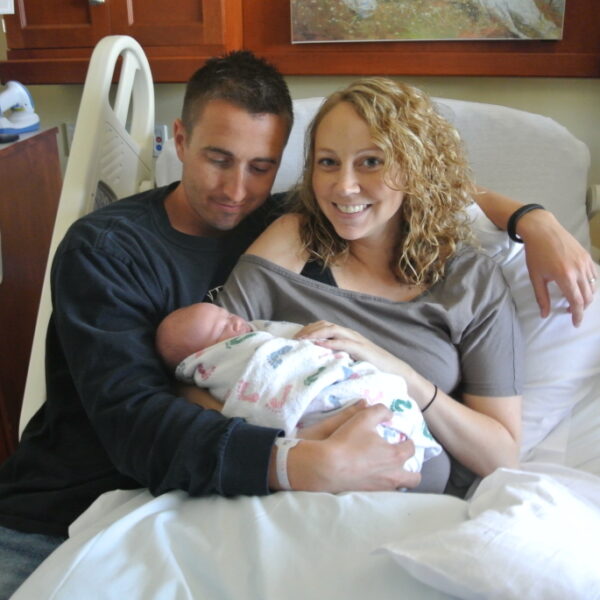One thing that has surprised many of my clients over the years is the amount of time they are asked to spend on the baby heartrate monitors during their labors. I wanted to share some of the evidence behind this practice and some tips for families to consider as they prepare for their baby’s birth.
If you and your baby are healthy/low risk, intermittent monitoring has been shown to be a great way to monitor the health of baby while also allowing the mother the freedom to move and use upright positions during labor.
Did you that intermittent monitoring…
- “Perhaps the most important risk of electronic fetal monitors to be aware of is their effect on Cesareans. In the U.S., “non-reassuring fetal heart tones” is the second most common reason for first-time Cesareans (23%) after Failure to Progress (34%) (ACOG/SMFM 2015). Because non-reassuring fetal heart tones can be a vague diagnosis, several professional organizations in the U.S. came together to decide upon a standard approach to interpreting and managing fetal heart rate tracings, with a goal of preventing unnecessary Cesareans.” (Evidence Based Birth)
- They can be uncomfortable.
- Providers often pay more attention to the monitor status rather than listening the mother’s choices in labor positions.
- They are not 100% accurate.
Check out Fetal Monitoring – Evidence Based Birth® for some more really great information on this topic!
What do the doctors say?
- For a woman who is at term in spontaneous labor with a fetus in vertex presentation, labor management may be individualized (depending on maternal and fetal condition and risks) to include techniques such as intermittent auscultation and nonpharmacologic methods of pain relief. (Approaches to Limit Intervention During Labor and Birth | ACOG)
ACOG stands for American College of Obstetricians and Gynecologists. What does this paragraph from ACOG mean? Basically, that if you go into labor and your baby is head down/low risk, you can ask for intermittent monitoring (auscultation) and position changes/water/movement during labor.
What are some tips for families?
- Include intermittent monitoring in your birth plan. Communicate your wishes to your providers during your prenatal appointments and during the birth.
- Wearable monitors that stick on are still considered continuous monitoring.
- Spend time in the tub.
- Sit on a birth ball and stay upright/active.
- Expect for your baby to be monitored every 10-30 minutes during labor.
- Ask that a handheld doppler be used instead. (This is what providers use during your prenatal appointments.)
- Hire a doula! Your doula will know how to help you advocate for intermittent monitoring.
- Take an out-of-hospital birth class so you can learn more about your options and how to navigate the hospital system.
As always, this information is meant to help you navigate your birth choices and provide you with information so you can have a conversation with your doctor or midwife. It is not medical advice as we (your doulas) are not medical providers.







Leave a Reply